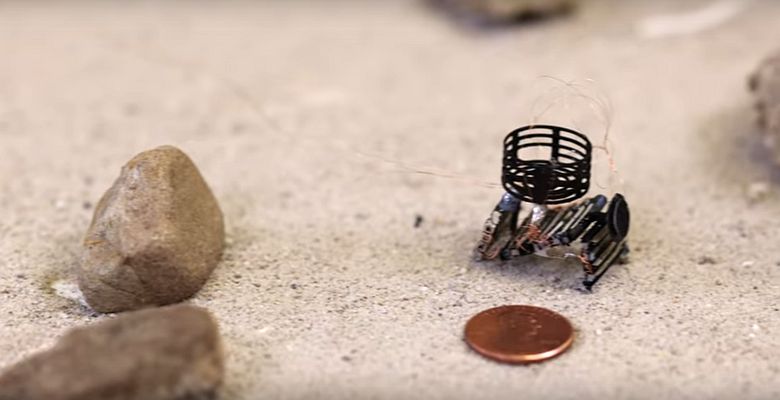UCLA developed a promise for 'metabots' designed to deliver drugs or support rescue missions.
Engineers led by the University of California Los Angeles (UCLA) have developed a new design strategy and 3D printing technique to build robots in one step. All the mechanical and electronic systems needed to operate a robot can be fabricated in a new type of 3D printing process for engineered multi-function active materials (also known as metamaterials). Once 3D printed, a 'meta-bot' will be capable of propulsion, motion, sensing and decision making.
Printed metamaterials
The printed metamaterials consist of an internal network of sensoric, motion and structural elements and can move themselves according to programmed commands. The only external component is a small battery to power the robot.
The researchers envision that this smart robotic materials design and printing methodology will help realize a class of autonomous materials. This could replace the current complex assembly process for making a robot. A robot thus made is similar to a biological system in which the nerves, bones and tendons work together to perform controlled movements.
Most robots are built in a series of complex manufacturing steps that integrate the limbs, electronic and active components. The current process results in significant weights, large volumes and reduced load capacity compared to robots that could be built using this new method.
Piezoelectric
The robotic materials developed by UCLA are composed of intricate piezoelectric and structural elements designed to bend, twist, rotate, expand or contract at high speeds. The metamaterials are a class of materials that can change shape and move in response to an electric field or they can create electric charge as a result of physical forces.
The two-way piezoelectric effect also allows the robotic materials to sense their own twists, detect obstacles via echoes and ultrasonic emissions, and respond to external stimuli via a feedback control loop that determines how the robots move, how fast they move and what target they are aiming for. to move."
Design and build
The team also developed a methodology to design these robotic materials, allowing users to create their own models and print the materials directly in a robot. This allows controls to be precisely arranged in the robot for fast, complex and extensive movements on different types of terrain.
Using the technique, the team built and demonstrated three 'metabots' with different capabilities. One robot can navigate around S-shaped corners and randomly placed obstacles, another can escape in response to a contact impact, while the third robot can walk over rough terrain and even make small jumps (look at the video).
Applications
The fully autonomous robots are the size of a fingernail. The method could lead to new designs for biomedical robots, such as self-steering endoscopes or small swimming robots. The latter can emit ultrasound and navigate themselves near blood vessels to deliver drug doses to specific target locations in the body.
These 'metabots' can also explore dangerous environments. For example, in a collapsed building, a swarm of such small robots, equipped with integrated sensor components, can quickly gain access to confined spaces. They can assess threat levels and find people trapped in the rubble.
Photo: Rayne Research Group/UCLA

